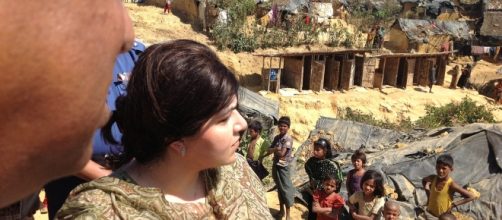August 25 saw a military-led campaign of killing people and burning villages of Rohingya in western Myanmar. Many fled to Bangladesh. Thousands of refugees continue to cross into Bangladesh while gunfire can still be heard on the Myanmar side of the border. Almost 60 percent of the refugees are children. Myanmar’s government said Rohingyas burned their own villages, but a United Nations high commissioner for human rights described the wave of violence as a “textbook example of ethnic cleansing”. Witnesses say that the burnings were clearly organized and planned in advance by the military and local government officials.
About 1 million Rohingya lived in Rakhine State in western Myanmar before they left for Bangladesh.
Who are the Rohingyas
Rohingyas are a Muslim ethnic group living in Myanmar, a predominately Buddhist country. They have lived in Myanmar for generations, but many Myanmar Buddhists consider them illegal migrants from Bangladesh. Rohingyas have long faced discrimination as well as the loss of basic rights. They have been denied citizenship in Myanmar, and many consider Rohingyas the most persecuted minority in the world.
Refugees coming to Bangladesh since the 1970s
More than 250,000 refugees resided in camps in Bangladesh in the 1990’s, but in the early 2000’s most were repatriated to Myanmar, many against their will.
Only 20,000 remained. An influx of refugees began again in 2015, and by late 2017, 600,000 Rohingya refugees were in Bangladesh. Many in Bangladesh blame the refugees for crime and the importation of the drug Ya Ba.
Bangladesh responds to the Rohingya refugees
The Bangladesh prime minister has asked Myanmar to take back the refugees.
Du Aung San Suu Kyi, the leader of Myanmar, said their government is prepared to welcome them back, and the army says the charges of abuse of Rohingya are unsubstantiated. Many human rights organizations disagree. The Bangladesh government has considered relocating Rohingyas to a remote island, Chengar Char, located in the Bay of Bengal.
Many say that the island floods and are inhabitable. Bangladesh is currently building one large camp for the refugees combining two settlements. Once inside the refugees will not be allowed to leave.
How you can help
There are ways to help the Rohingya refugees. Consider donating to organizations such as UNICEF, UNHCR (the UN refugee agency), or International Rescue Committee.


